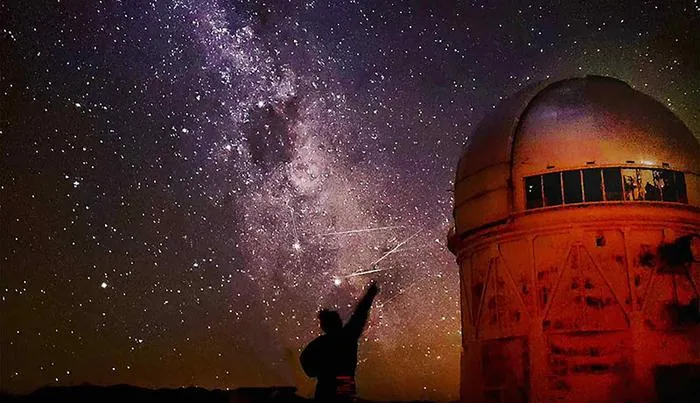
Astronomers Uncover the Birth of Galaxies in a Stellar Dawn
2025-06-07
Author: Siti
A Stunning Revelation from Cosmic Noon
Billions of years after the Big Bang, a thrilling era known as "Cosmic Noon" marked a dynamic chapter in the universe's history. Newly unveiled research reveals that during this time, Lyman Alpha Emitters (LAEs)—a special class of galaxies—were bursting forth with their first major waves of star formation.
The Research Breakthrough
Led by a groundbreaking study from Rutgers University-New Brunswick, scientists are now piecing together vital insights into galaxy evolution. By leveraging precise imaging techniques combined with state-of-the-art machine learning algorithms, the team probed this pivotal phase in cosmic development.
What Are Lyman Alpha Emitters?
Thanks to their vigorous star-forming activities, LAEs radiate brightly, with their ultraviolet emissions transforming into visible light due to the universe's ongoing expansion. These celestial wonders are situated an astonishing 12 billion light-years away, providing a rare glimpse into the distant past and unlocking clues to the universe's infancy.
Unraveling Galaxy Histories
"LAEs are seen as the precursors to modern galaxies like our Milky Way," states lead author Nicole Firestone, a proud National Science Foundation Graduate Research Fellow. "This discovery brings us closer to understanding our galaxy's 'origin story' and sheds light on the mysteries of cosmic creation."
The Milky Way's Story Revisited
The quest to trace our Milky Way's origins has long captivated astronomers, especially when it involves studying ancient galaxies. The delay of light travel from these distant realms allows researchers to observe how initial star formation unfolded. Over time, these LAEs are expected to evolve into structures resembling our galaxy.
Confirming Ancient Starbursts
A long-standing debate in the astrophysics community revolved around whether these LAEs were simply older galaxies entering revitalized phases of star formation, or if they were genuinely kicking off their first bursts of stellar activity. With this new research, it's become clear that LAEs are indeed enjoying their maiden starbursts, sporting only very young stars.
Innovations in Observational Techniques
Using the advanced Dark Energy Camera at the Cerro Tololo Inter-American Observatory in Chile, the ODIN project sky survey gathered the necessary imaging data. The camera’s expansive view captures exquisite details of the night sky, revealing LAEs as luminous beacons against a backdrop of fainter visible light.
Machine Learning Meets Astronomy
The research team employed sophisticated machine learning techniques to disentangle the properties of these dazzling objects. By analyzing star formation rates and compiling the histories of LAEs, they discovered an astonishing 95% were indeed at their peak star formation stages—settling the debate on the timeline of galaxy formation.
Understanding Our Cosmic Roots
As co-author Eric Gawiser noted, "This pivotal discovery helps us envision what our very own Milky Way might have looked like during its formative days of star formation." Their findings illuminate the long-standing mystery of galaxy evolution, providing clarity on how these massive cosmic structures came to be.
Future Insights Await
Published on June 4, 2025, in Nature Astronomy, the paper titled "ODIN: Star Formation Histories Reveal Formative Starbursts Experienced by Lyα-emitting Galaxies at Cosmic Noon" sets the stage for groundbreaking advancements in our understanding of the universe.



 Brasil (PT)
Brasil (PT)
 Canada (EN)
Canada (EN)
 Chile (ES)
Chile (ES)
 Česko (CS)
Česko (CS)
 대한민국 (KO)
대한민국 (KO)
 España (ES)
España (ES)
 France (FR)
France (FR)
 Hong Kong (EN)
Hong Kong (EN)
 Italia (IT)
Italia (IT)
 日本 (JA)
日本 (JA)
 Magyarország (HU)
Magyarország (HU)
 Norge (NO)
Norge (NO)
 Polska (PL)
Polska (PL)
 Schweiz (DE)
Schweiz (DE)
 Singapore (EN)
Singapore (EN)
 Sverige (SV)
Sverige (SV)
 Suomi (FI)
Suomi (FI)
 Türkiye (TR)
Türkiye (TR)
 الإمارات العربية المتحدة (AR)
الإمارات العربية المتحدة (AR)